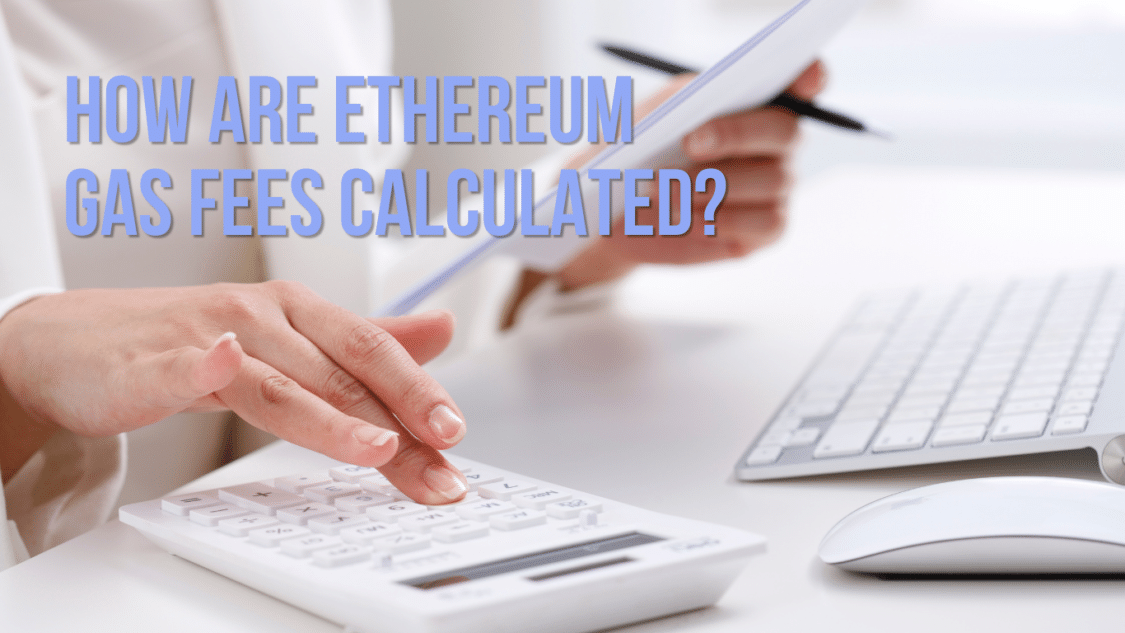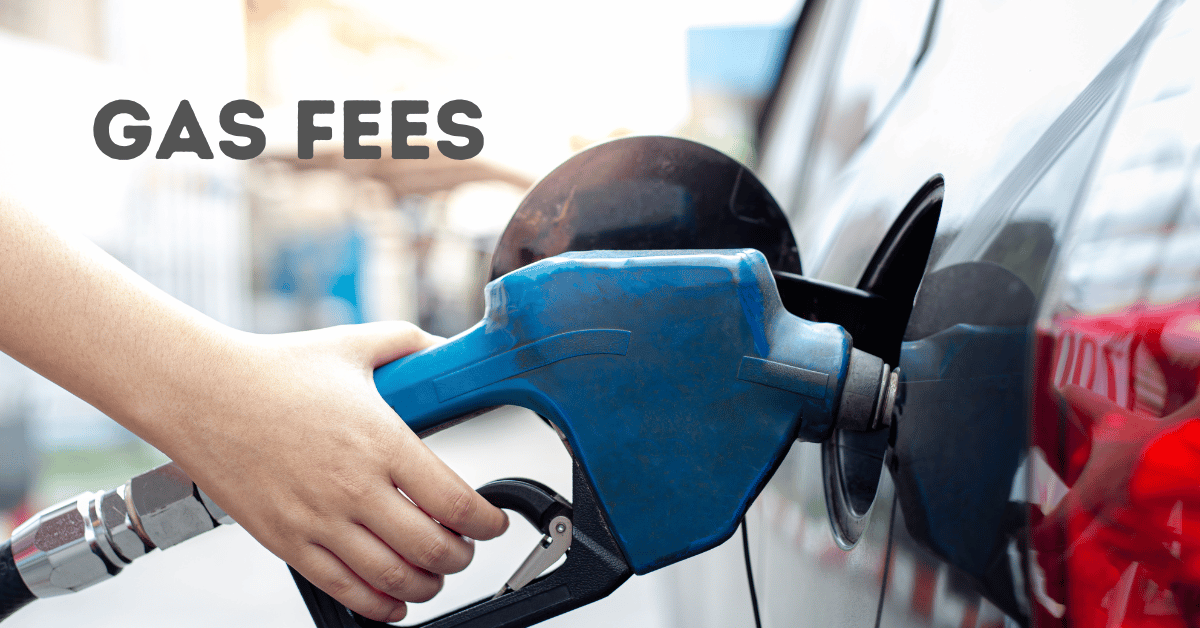In the world of cryptocurrency, Ethereum stands tall as a leading platform for decentralized applications and smart contracts. However, a hotly debated topic lies within this innovative ecosystem: gas fees.
Ethereum gas fess have garnered both attention and criticism, with users grappling to understand their intricacies and seeking ways to navigate the ever-fluctuating costs.
In this comprehensive guide, we unravel the mysteries surrounding Ethereum gas fees, delve into their calculation methods, explore the reasons behind their expense, and provide valuable insights on how to save on gas. Whether you’re a seasoned Ethereum enthusiast or a curious newcomer, this article aims to equip you with all the essential knowledge to navigate Ethereum gas fees and optimize your transactions for a smoother and more cost-effective experience.
Let’s discuss the basics of what gas is before going into detail on how Ethereum gas fees are calculated.
What is a Gas Fee?
A gas fee on the Ethereum network is a small amount of cryptocurrency paid to miners as compensation for validating and executing transactions or smart contracts. Its purpose is to measure computational capacity, determining the computational intensity needed to execute a particular network operation. Gas fees are essential to the Ethereum ecosystem, as they incentivize miners to process transactions and secure the network. By paying gas fees, users prioritize their transactions and ensure they are included in the blockchain.
Why are Gas Fees Hated on?
For several reasons, gas fees, an essential part of the Ethereum ecosystem, have become a point of frustration among users. They can surge dramatically during high network congestion, making transactions, even simple ones, costly. This congestion occurs when the number of pending transactions exceeds the network’s capacity, leading to competition for limited block space.
Gas fees range from less than 0.0001 USD to over 100 USD, and they increase with increased network activity, resulting in higher transaction fees. The unpredictability of gas fees further compounds the frustration as users need help to accurately estimate transaction costs, making budgeting and strategy adjustments challenging. Some argue that gas fees predominantly benefit miners, creating a perceived imbalance in the fee structure.
How are Ethereum Gas Fees Calculated?
Gas fees on the Ethereum network are calculated based on two primary factors: gas price and gas limit. The gas price signifies the amount of cryptocurrency users are willing to pay per gas unit, serving as a financial incentive for miners to include the transaction in a block. To calculate the total gas fee, users can utilize a gas fee calculator and multiply the gas price by the limit. Miners prioritize transactions with higher gas fees, allowing users to adjust the gas price and limit to influence the speed and cost of the transaction.
Understanding how gas fees are calculated sheds light on why they can become high. In the Ethereum network, fees are typically denominated in wei, a metric system of units where one Ethereum is equivalent to one quintillion wei. For instance, if an Ethereum gas tracker indicates a gas price of 100 gwei, users would need to pay a fee of 0.0000001 ETH for a specific transaction.

Following Ethereum’s London upgrade, gas fee structures have been revised. The total fee is now determined by the formula: Total Fee = Gas unit (limits) * Base fee + tip. By utilizing the calculator, users can obtain a clearer understanding of the fee structure and make more informed decisions when conducting transactions on the Ethereum network. This updated calculation method ensures a more transparent and predictable fee structure for Ethereum users.
Following Ethereum’s London upgrade, gas fee structures have been revised. The total fee is now determined by the formula: Total Fee = Gas unit (limits) * Base fee + tip. This updated calculation method ensures a more transparent and predictable fee structure for Ethereum users.
Gas Units (limits)
Gas Units are the most you’re prepared to pay for gas in a transaction. The Gas Units can be adjusted. However, it must be done carefully because different transactions within the Ethereum blockchain require different amounts of gas to be completed.
Base Fee
A base fee is the minimum gas required to add a transaction on the Ethereum blockchain. The base fee for a transaction, regardless of its type, is determined by the demand for its inclusion, which in turn dictates the amount of gas needed. A base fee is also often adjusted due to the number of users on the Ethereum blockchain network.
Tip
A tip, often referred to as a priority fee, serves as an extra charge that expedites the progress of your transaction. It is referred to as a tip as an incentive for Ethereum miners to confirm your transaction before any other. A miner is rewarded with a priority fee when they verify a transaction that includes one. They usually begin with a transaction with the most significant tips attached to maximize their profits.
It’s important to remember that if your gas unit limit is set below the gas needed to conduct a transaction, the transaction will be cancelled, but you won’t be refunded the gas fee. This is so that the miner, who put in the necessary effort to complete your transaction, will be compensated even if the transaction did not go through.
Why are Gas Fees so Expensive?
The first and most realistic reason for the high Ethereum gas fees is that Ethereum costs more. Keep in mind that gas prices are presented in gwei, an alternative way to represent a sum of ETH. The flourishing decentralized finance (DeFi) and NFT industries, attracting new users to Ethereum’s ecosystem, are the most significant factors of the growing demand.
The Ethereum blockchain consists of more than 3,000 dapps that have their transactions included next to other Ethereum network users. To give you a feel of the traffic on the Ethereum network. Dapps comprises approximately 100,000 daily users on the network, which equals a total of 250,000 transactions daily.

In addition to increasing base fees, the widespread use of Ethereum has also increased the volatility of the gas for base fees. The Ethereum EIP 1559 upgrade was an attempt to make gas fees more consistent by determining base fees from the previous transaction. While the full effects of EIP 1559 are under discussion, base fees continue to drive up the overall cost of gas fees because of the growing demand for Ethereum.
What Factors Influence the Fluctuation of Gas Fees on Ethereum?
Several factors contribute to the fluctuation of gas fees on Ethereum. Network congestion is a primary influencer. During periods of high transaction volume or when popular dApps experience a surge in usage, the network’s capacity can be strained. As a result, gas fees tend to rise due to the increased competition for block space. Additionally, external events can also impact gas fees. For example, major token sales or network upgrades can attract a significant number of users, leading to increased activity and subsequent fee fluctuations. Furthermore, fluctuations in Ether (ETH) price can indirectly influence gas fees since they are denominated in ETH.
How to save on gas?
As gas fees are mandatory, there is no way to avoid them; however, there are some ways to lower the burden. There are ways to reduce the total fee by lowering the base fee and tip. One approach to accomplish this is by timing your transaction for moments when the blockchain experiences lower activity levels. This is because base fees, in a sense, are a measure of demand when using Ethereum. Gas prices increase when more effort is required to engage with the Ethereum network. Therefore, the less activity on the network, the lower the fee. Often weekends are an excellent time to check in.
Lowering your tip can also lower your overall gas fee cost. Remember that we can pay miners an extra “tip” or “priority fee” in exchange for a quicker transaction time. Reducing your tip can be another way to save gas money if you’re not pressured on time. Another method to reduce your gas fee is by setting a maximum gas fee limit on your transaction. The moment the transaction goes through, the network will refund the remainder of the fee that was not included in your total gas fee.
The final tip to help you save on gas is with the “layer 2 scaling solution.” Scaling tools are extensions to the Ethereum network that aim to boost transaction processing speed and transaction volume per second. Some examples are Arbritum, dYd, and Loopring. Scaling solutions are off-chain, which means they are inactive on the Ethereum blockchain. Layer 2 scaling techniques come in various forms but function similarly. They are executed off the chain, confirmed by the Ethereum network, and recorded on the chain.
How can I Reduce my Ethereum Gas Fees?
Reducing ETH gas fees requires optimizing your transactions and making informed choices. One approach is to optimize the gas usage of your transactions. Minimizing unnecessary steps and interactions with smart contracts can significantly reduce gas consumption and, consequently, lower gas fees. Consider using more efficient contract methods or bundling multiple actions into a single transaction to save on gas. Monitoring gas price fluctuations is crucial as well.
By keeping an eye on gas price trends, you can plan and execute transactions during periods of lower network congestion, resulting in reduced fees. Additionally, exploring alternative layer-2 scaling solutions or blockchains offering lower fees can be viable. These solutions leverage off-chain or sidechain technologies to process transactions cost-effectively, bypassing the main Ethereum network’s high gas fees.
Are Gas Fees the Same for Every Ethereum Transaction?
Gas fees are not the same for every Ethereum transaction. The gas fee is determined by the gas price and gas limit set by the user. The gas price represents the amount of cryptocurrency (in gwei) users are willing to pay for each unit of gas. A higher gas price increases the likelihood of miners promptly including the transaction in a block.
Conversely, the gas limit signifies the maximum quantity of gas that one is ready to utilize for a transaction. The gas limit is influenced by the complexity of the transaction or smart contract execution. More complex operations require a higher gas limit, which can result in a higher gas fee. Therefore, different gas prices and limitations transactions will have different gas fees.
Closing Thoughts
Navigating Ethereum gas fees can be daunting, but with the understanding gained from this guide, you are well-equipped to make informed decisions and optimize your Ethereum transactions. Gas fees play a vital role in the Ethereum ecosystem as a crucial mechanism to ensure network security and prioritize transactions. While the current challenges of high fees and network congestion persist, it’s important to stay informed about potential solutions and advancements, such as the Ethereum network upgrade (EIP-1559) and the emergence of layer-2 scaling solutions.
By carefully planning your transactions, monitoring gas prices, and exploring alternative options, you can find ways to save on gas and streamline your Ethereum experience. Remember, Ethereum’s potential and innovation extend far beyond the realm of gas fees and with a growing community committed to improving scalability. The future holds promise for a more efficient and accessible Ethereum network.




